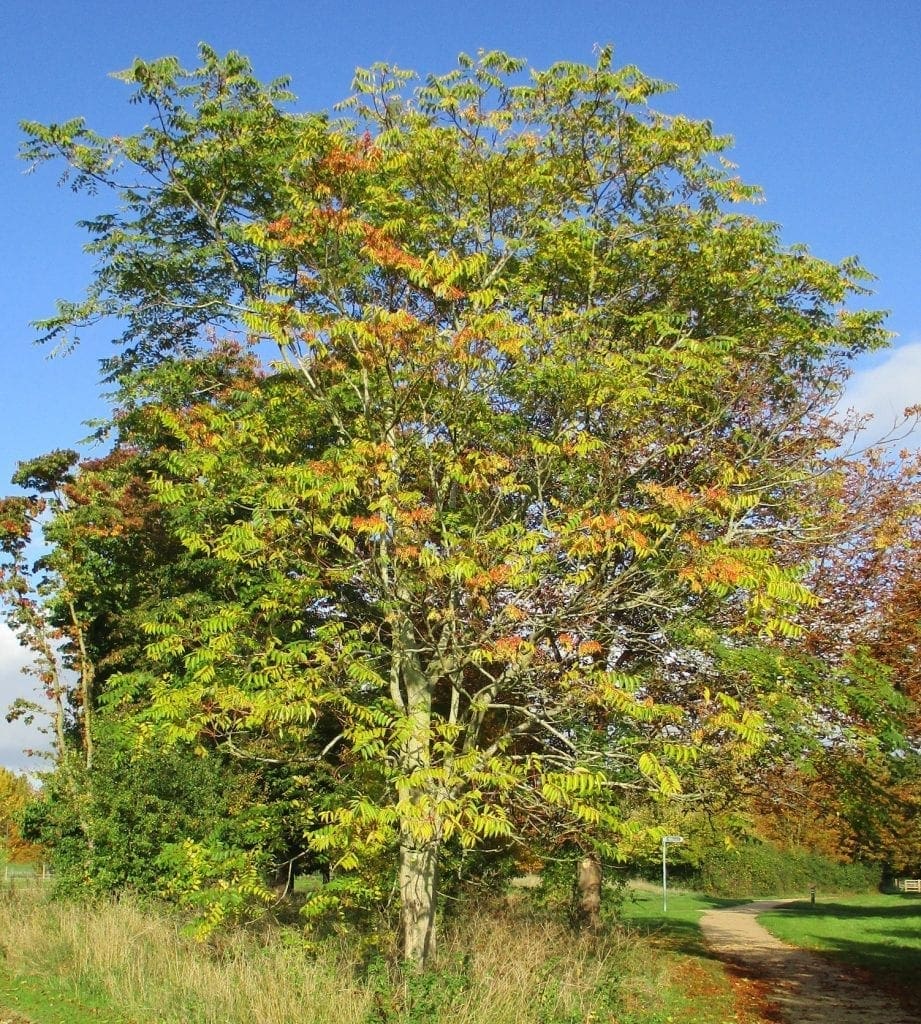Tree Of Heaven Guide: Key Traits

The Tree of Heaven, also known as Ailanthus altissima, is a versatile and resilient tree species native to China and Taiwan. Introduced to North America in the 18th century as an ornamental plant, it has since spread rapidly across the continent, often becoming an invasive species. Understanding the key traits of the Tree of Heaven is essential for managing its growth, mitigating its impact on native ecosystems, and appreciating its unique characteristics.
Origins and History
The Tree of Heaven has a long history of cultivation, dating back to ancient China where it was valued for its timber, medicinal properties, and aesthetic appeal. Introduced to Europe and later North America, it was initially welcomed for its rapid growth and ability to thrive in poor conditions. However, its invasive potential soon became apparent, as it began to outcompete native species for water, nutrients, and space.
Physical Characteristics
- Growth Habit: The Tree of Heaven is known for its rapid growth, reaching heights of up to 80 feet under optimal conditions. It has a broad, spreading canopy and a straight bole with smooth, gray bark that becomes fissured with age.
- Leaves: Its compound leaves are large, typically 1 to 3 feet long, consisting of 13 to 27 leaflets that are lance-shaped and have a bad smell when bruised, which is often compared to the odor of rotten peanut butter or garlic.
- Flowers and Fruits: The tree produces small, yellowish-green flowers in late spring, which are followed by clusters of red, winged seeds (samaras) that are 2 to 3 inches long, including the wing. These seeds are an important food source for various birds and mammals but also contribute to the tree’s invasive potential.
Ecological Impact
The Tree of Heaven’s ability to grow almost anywhere, including poor soil and urban environments, is both a blessing and a curse. On one hand, it can serve as a Pioneer Species, able to establish itself in disturbed areas and begin the process of ecological succession. On the other hand, its aggressive growth, allelopathic properties (which can inhibit the growth of other plants), and ability to form dense stands can lead to the displacement of native species and reduction in biodiversity.
Uses and Benefits
Despite its invasive nature, the Tree of Heaven has several practical uses: - Timber: The wood is used for furniture, interior finish, and pallets, although it’s not as durable as other hardwoods. - Medicine: In traditional Chinese medicine, parts of the tree are used to treat various ailments, including fever and rheumatism. - Ornamental: It can still be valued for its aesthetic appeal, particularly in urban landscapes where its tolerance to pollution and poor conditions is beneficial. - Wildlife Habitat: It provides food and shelter for wildlife, including birds, squirrels, and other small mammals.
Management and Control
Given its potential for invasion, managing the spread of the Tree of Heaven is crucial. Strategies include: - Prevention: Avoid planting it in areas where it could become invasive. - Early Detection and Rapid Response: Regular monitoring for new growth, followed by immediate removal. - Mechanical Control: Cutting, mowing, or hand-pulling, although repeated efforts may be necessary as new sprouts can emerge. - Chemical Control: Herbicides can be effective but should be used with caution to avoid harming other plants or the environment. - Biological Control: Research into natural predators or diseases that could control its population is ongoing.
Conclusion
The Tree of Heaven is a complex species with both beneficial and detrimental aspects. Its survival and spread are testaments to its resilience and adaptability. While it presents challenges for ecosystem management, understanding and respecting its place in the natural world can help mitigate its negative impacts. For those interested in cultivating it, careful consideration of its potential effects on local ecosystems is essential. By adopting a balanced approach to its management, we can appreciate the Tree of Heaven’s unique qualities while protecting native biodiversity.
How do I identify a Tree of Heaven?
+To identify a Tree of Heaven, look for its large, compound leaves with 13 to 27 leaflets, smooth gray bark, and clusters of red, winged seeds. The leaves also have a distinctive unpleasant odor when bruised.
Is the Tree of Heaven toxic to animals?
+While parts of the Tree of Heaven can be toxic, its seeds and leaves are generally not harmful to animals in small quantities. However, consuming large amounts could potentially cause gastrointestinal upset.
Can the Tree of Heaven be used as a natural remedy?
+In traditional Chinese medicine, the Tree of Heaven is used to treat various conditions. However, its use should be approached with caution and ideally under the guidance of a healthcare professional, as its efficacy and safety for such uses are not extensively scientifically validated.



